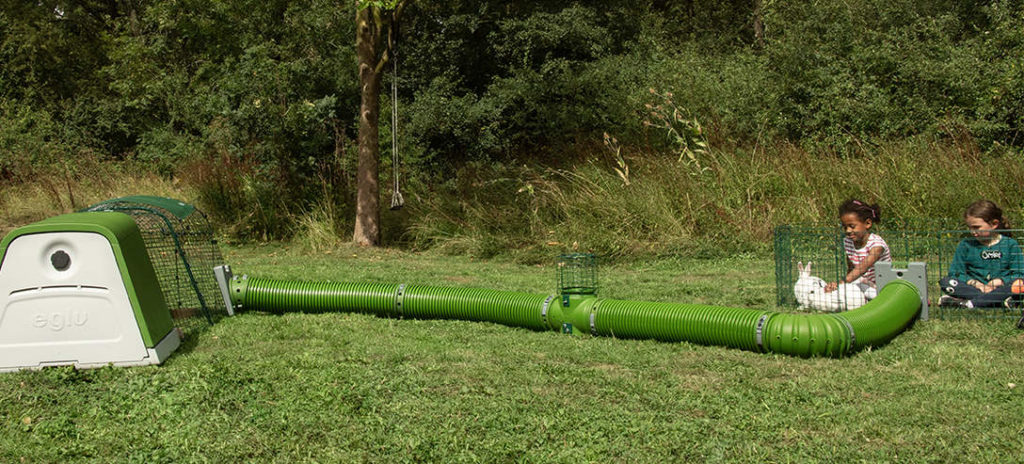
Why Settle For A Hutch When You Can Have A Warren?
We all know that pet rabbits need a hutch and a run. But what if they could enjoy the luxuries of a warren in your own back garden, complete with rabbit burrows and tunnels, without having to dig under the lawn and flower beds?
Connecting a rabbit hutch to a run is a simple way to keep bunnies happy. A set up such as Omlet’s Eglu Go is part of the solution, combining the indoors and outdoors that rabbits require. But there are other, more ingenious ways of giving your bunnies the perfect home.
Drain Pipes For Rabbits?
Like all animals, rabbits have inbuilt instincts that need satisfying. Rabbit tunnels and rabbit burrows are as central to their requirements as a bathroom and a comfy bed are to you. In the wild, rabbits live in complex warrens, made up of many private and communal living spaces linked by underground tunnels. This instinct to move around underground is strong in pet bunnies too. And yet, for many, it is an instinct that remains unsatisfied.
This was the inspiration behind the Zippi Rabbit Tunnel System, a design that builds and improves on the concept of drain pipes for rabbits. Its durable, flexible, easy-to-clean tunnels are a neat DIY solution that gives rabbits the tunnelling their instincts demand, and with no extra digging required.
A Rabbit Tunnel, And Then Some!
The Zippi Rabbit Tunnel System’s burrow pipes provide easy access from hutch to run, and a cosy bolt hole too. They can link runs to playpens too, enabling your kids to become part of the home warren.
Because rabbits come in all sizes, the Zippi Rabbit Tunnel System is built to accommodate the very largest of breeds, and is designed with a flexibility that puts the average drainpipe to shame:
- It comes in 90cm sections, with no limit on the length and complexity of your set up.
- All fixings and connectors are supplied.
- The Zippi doesn’t think in straight lines – it can curve around any garden feature if required.
- In addition to the standard 90cm tunnel, there are optional Zippi T-Junctions, Corner Pieces, Lock-out doors, and mid-tunnel Look-out sections which double as Hay Racks.
- Support hoops lift the Zippi from the ground, enabling the grass to grow beneath it.
- The unique design provides ventilation and drainage, and keeps out any would-be predators.
Bunny Bliss
Rabbits make great pets. They don’t disturb the peace, they don’t hunt birds and rodents, and they don’t require constant walking and training. Coupled with the fact that they are cute and full of character, this has made them a hugely popular choice of pet in recent years.
But it’s not just about keeping you happy, it’s about delivering the bunny bliss your pet deserves. With a hutch and run, you’ve provided a cosy home. But add the Zippi Rabbit Tunnel System, and you’ve got a wonderful warren that represents the ultimate des res for rabbits.
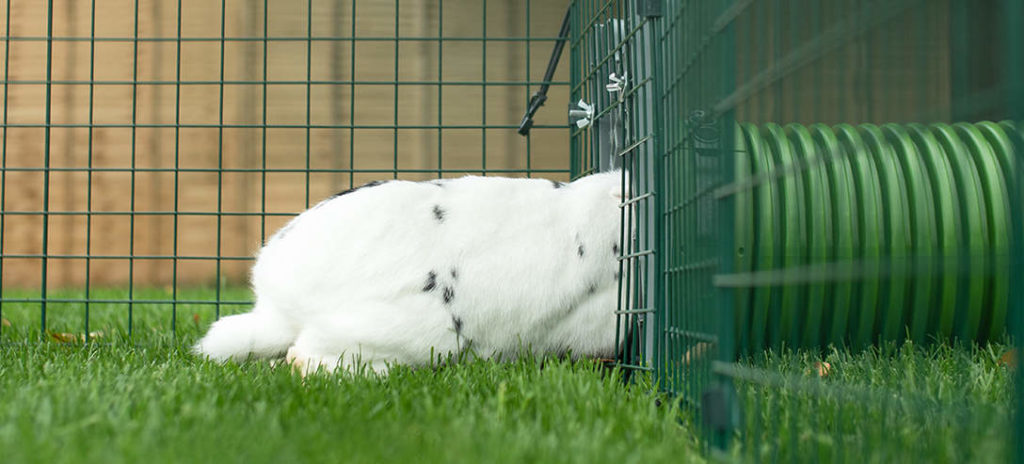
This entry was posted in Rabbits on November 15th, 2018 by sammorley
Introducing a new cat or kitten to your resident cat can be quite a daunting situation. One thing you don’t want to do is just put them together without any thought or preparation.
If you introduce the cats too soon or without easing them in they can become very hostile due to the fact that they might be feeling threatened or scared.
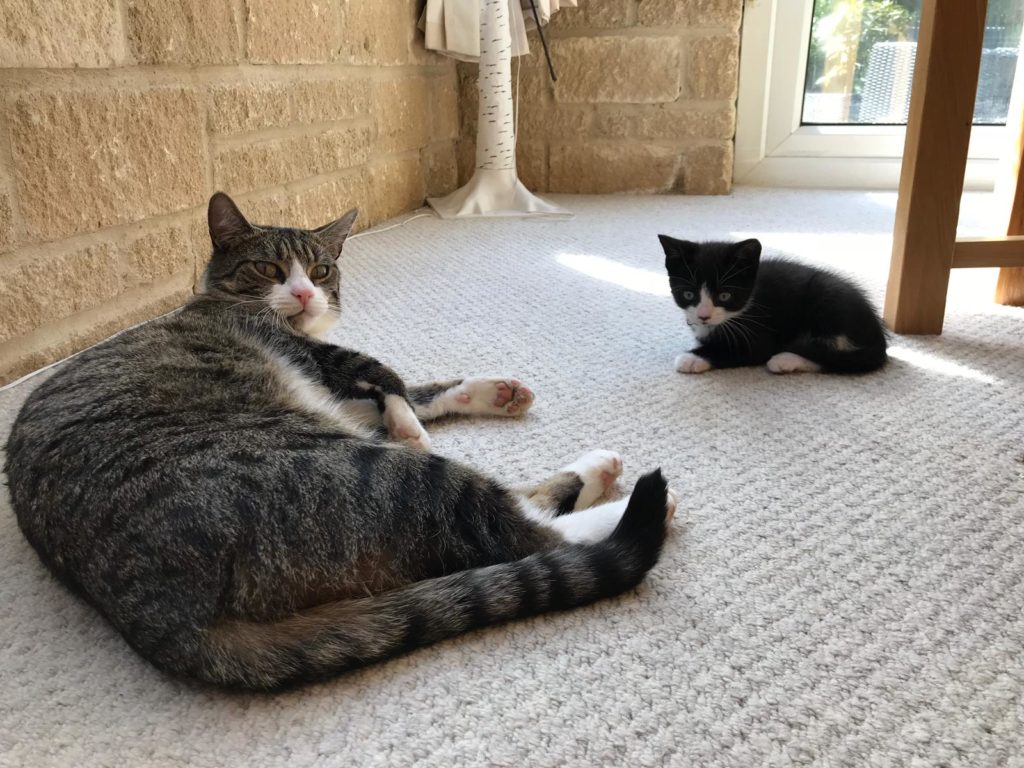
One thing to note particularly with cats is that once they feel this way about another cat it can be very hard to change their minds hence why a cautious and slow introduction is the best way to ensure both animals feel safe and happy together.

Unlike many animals and humans, cats don’t actually crave companionship from one of their own. They are perfectly happy being the only cat in the house. This isn’t to say they won’t enjoy the company of another cat it’s just they don’t have that need or desire for company that you are used to seeing in other animals.
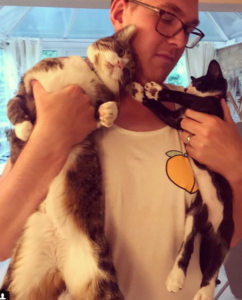 Introducing a new kitten to an existing adult cat might be easier as the older cat might not feel as threatened due to the fact that the kitten isn’t sexually mature. However it is worth noting that a kitten will be very lively and playful which for a resident older cat might be quite stressful so it’s important you give your existing cat some down time in a separate room to chill out.
Introducing a new kitten to an existing adult cat might be easier as the older cat might not feel as threatened due to the fact that the kitten isn’t sexually mature. However it is worth noting that a kitten will be very lively and playful which for a resident older cat might be quite stressful so it’s important you give your existing cat some down time in a separate room to chill out.
Initially it is best to keep the cats in separate rooms of your house. One in the living room and one in the spare room for example. Place all the items your new cat will need in this room, litter tray, food, water etc. Make sure there is no competition for food, litter trays and sleeping areas. Create safe separate spaces for both of them to co-exist.
Cat diffusers- These can be used a couple of days before you bring your new cat into the home, these are designed to emit pheromones which relax and soothe your cat which makes them feel safe and secure.
If you are introducing a kitten, you can use a dog crate for the initial stages. Top tip: get your kitten used to the crate before you place the kitten in the same room as the resident cat, you can do this by using it in a separate room with the door open for the kitten to become familiar with the crate.
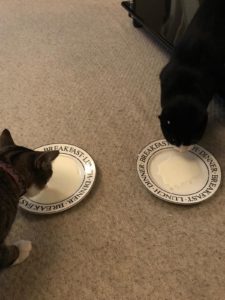
Height is another great asset for cats particularly when they’re feeling scared or threatened. Make sure there is enough high areas or places in your house for the cats to access to give themselves a bit of time to calm down.
Cats have a good sense of smell, therefore unfamiliar scents can be stressful for them, especially when they know it’s from another cat. The idea of scent swapping is an easy but super effective way to safely get the cats familiar with one another. Try swapping their bedding nightly also stroke both cats separately but don’t wash your hands in between, this will cause their scents to become mixed up and they’ll start feeling more familiar with one another even before they’ve met!
Common ground- for initial introductions you want to make sure that the cats are meeting in a neutral area that’s not assigned to either of them but ensure that they have access back to their own safe spaces if they want to leave. In this time, initially just leave them to it, they will assess each other from afar and when they feel comfortable enough to approach each other they will. Try to refrain from picking them up and forcing them to be closer together.
One great way to start the cats bonding is to feed them both at this time, in separate bowls but with a good enough distance between them.
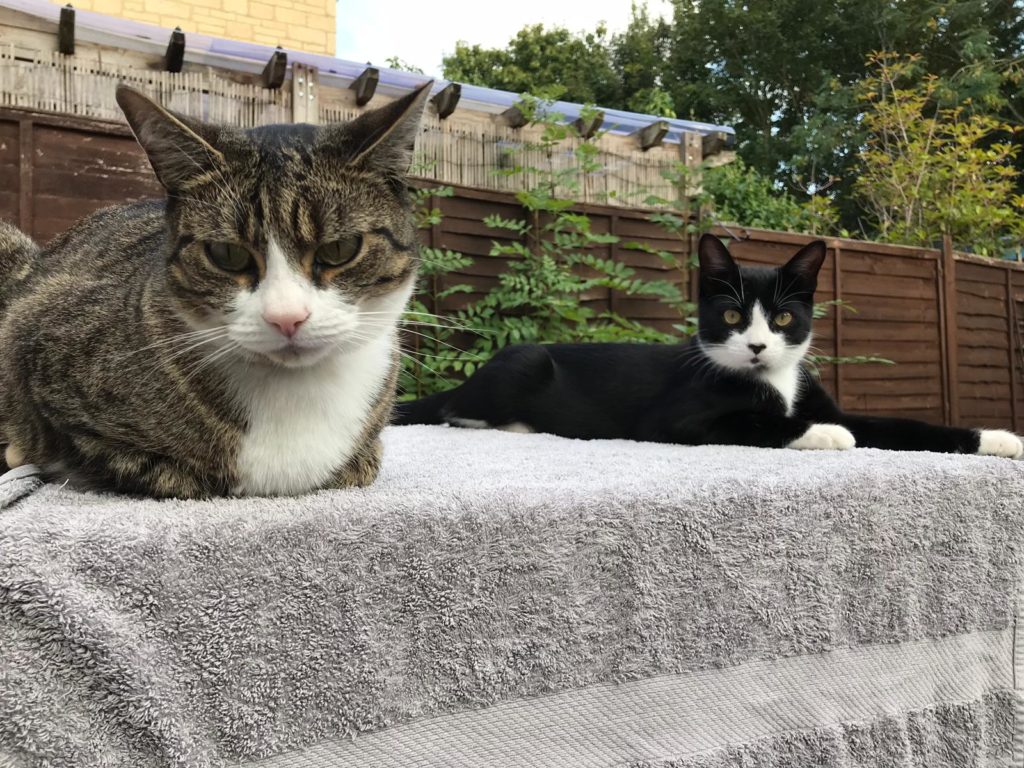 Hissing and moaning isn’t unusual but it just lets you know where they are at, perhaps slow the process down and keep them separate for a few more days and then try again.
Hissing and moaning isn’t unusual but it just lets you know where they are at, perhaps slow the process down and keep them separate for a few more days and then try again.
Most importantly to create a harmonious environment for your new and existing cat is to make sure there are enough separate areas for them to eat, drink, sleep and go to the toilet, this is a sure fire way to ensure there’s no unnecessary fights!
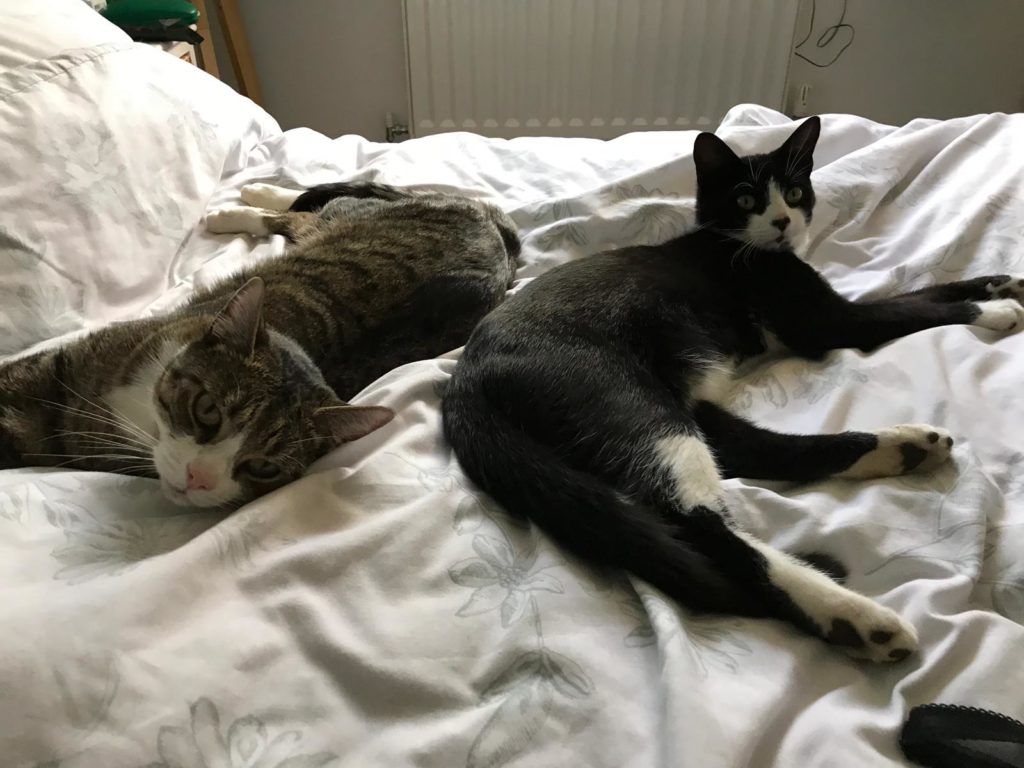
This entry was posted in Cats on November 14th, 2018 by sammorley

Guinea pigs are amazing, social pets that have lots to offer the families that share a home with them. But do you know how they got their name, how much (or little) they sleep, and how many toes they have? These 12 facts you might not know about your guinea pig will increase your love and appreciation for your cavies.
1. What’s in a name?
“Guinea pig” is actually a misnomer. They aren’t from Papua New Guinea — rather, they originate from the Andes mountains of Peru. The first part of their name is due to them being sold for a guinea (an old English coin) when sailors brought them from South America.
2. Not pigs at all
The second half of a guinea pig’s name is also a misnomer. They aren’t related to pigs at all — they’re actually members of the rodent family. Guinea pigs are so named because of the grunting noises they make, which reminded people of piglets. The other term for guinea pigs is “cavies”, or singular, “cavy.” It comes from their scientific name Cavia porcellus, with porcellus meaning “little pig.”
3. Even more misnomers
Like pigs, male guinea pigs are called boars and females are called sows. But, instead of baby guinea pigs following suit and being called piglets, they’re called pups. Even though their names imply they are similar to puppies at birth, this too, is incorrect. In reality, canine puppies and guinea pig pups have very little in common at birth.
4. Born ready
“Pups” are born with fur and their eyes open, and are very mobile from an early age. Most other species of rodents are born hairless and blind, unable to venture beyond their nest during the first few days of life. Guinea pig pups can see, walk, hear, and even have teeth. This gives them an advantage as prey animals in the wild.
5. Size and stature
Fully grown guinea pigs weigh between 1 and 3 pounds and are 8 to 16 inches long. Boars tend to be larger than sows, but should not be overweight. Guinea pigs are prone to obesity, which may be difficult to detect due to their oblong, potato-like shape. Cavies are considered overweight if you can’t feel their spine, ribs, or hips through their fat, or if they develop visible fat pads.
6. A longer lifespan than other rodents
Small pets aren’t known for their long lifespans, but guinea pigs actually live a relatively long life when they’re well cared for. The average lifespan of a domesticated guinea pig is 5-7 years.
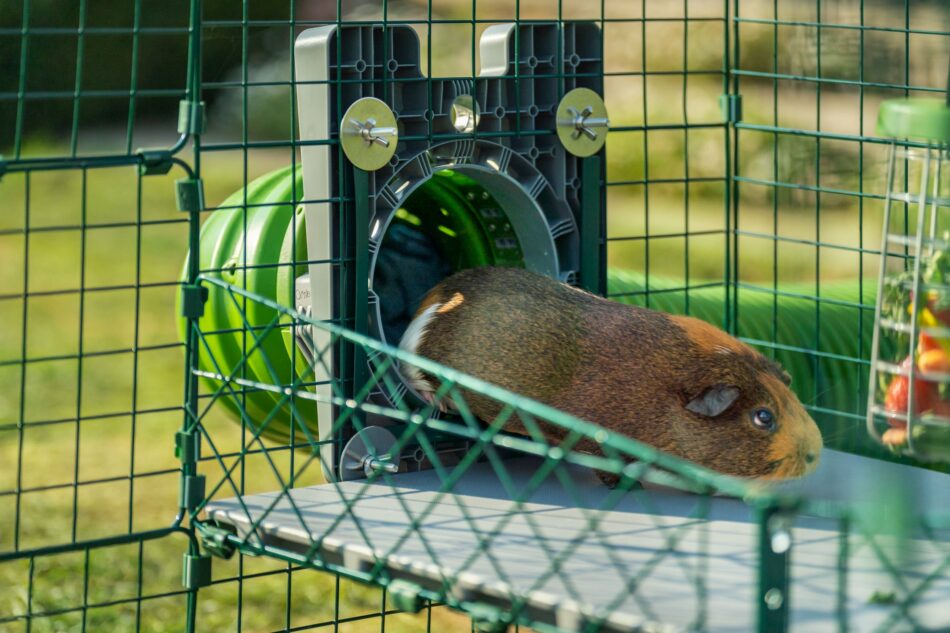
7. Abnormal number of digits
Guinea pigs have 4 toes on their front feet, but only 3 on their back feet. This brings their total toe count to 14. But, some guinea pigs may have more than the expected number of toes if they have a condition called “polydactyly” which is a genetic mutation that causes extra toes to grow.
8. Ever-growing teeth
Like other rodents, cavy teeth grow continuously throughout their lives. It’s important to give them food and treats to gnaw on to help them keep their teeth in check. Serving your guinea pigs’ favorite chews in a Caddi guinea pig treat holder will help keep their teeth-trimming treats at an accessible level.
9. Surprisingly little sleep
Guinea pigs don’t sleep much. In fact, they only sleep about 4-6 hours in a 24-hour period. They’re also proficient in power napping — taking short naps lasting anywhere from a few seconds to a few minutes, but usually not more than 30 minutes at a time. Cavies need a comfortable guinea pig hutch to get optimum rest during these short slumbers.
10. Very vocal
Guinea pigs have their own language, and are extremely vocal. Their broad range of noises include: purring, whining, shrieking, cooing, rumbling, hissing and teeth chattering. It’s very common for guinea pigs to greet their owners in what cavy keepers have dubbed a “wheek” — a happy, excited noise that a guinea pig emits.
11. Cavy companions
Guinea pigs are very social animals and need companionship to thrive. Their vast vocabulary and social relationships are best shared with other cavies. Bonded pairs are usually the happiest, but some guinea pigs will happily live in a social group of 3 or more. Remember to only keep same-gendered or spayed and neutered pairs together to avoid accidental litters.
12. A coat for every occasion
Guinea pigs come in a variety of colors and textures. Their different breeds create long and short coats with textures ranging from curly and wavy, to short and smooth, to no hair at all.
Owning guinea pigs with Omlet
Cavies are cute, quirky pets that the whole family can enjoy. By housing them in secure outdoor guinea pig hutches, you’ll be able to observe all of the wonderful attributes that your cavies display. Elevate their favorite foods and watch them exhibit these natural behaviors, while observing the unique attributes that make guinea pigs some of the most entertaining and enjoyable pets to share your space with.
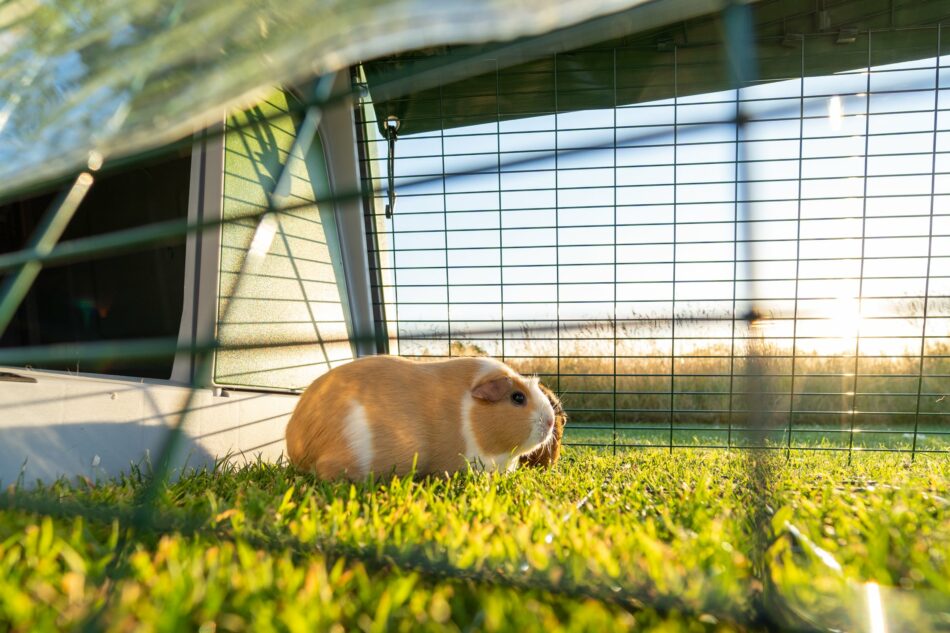
This entry was posted in Guinea Pigs on November 9th, 2018 by sammorley
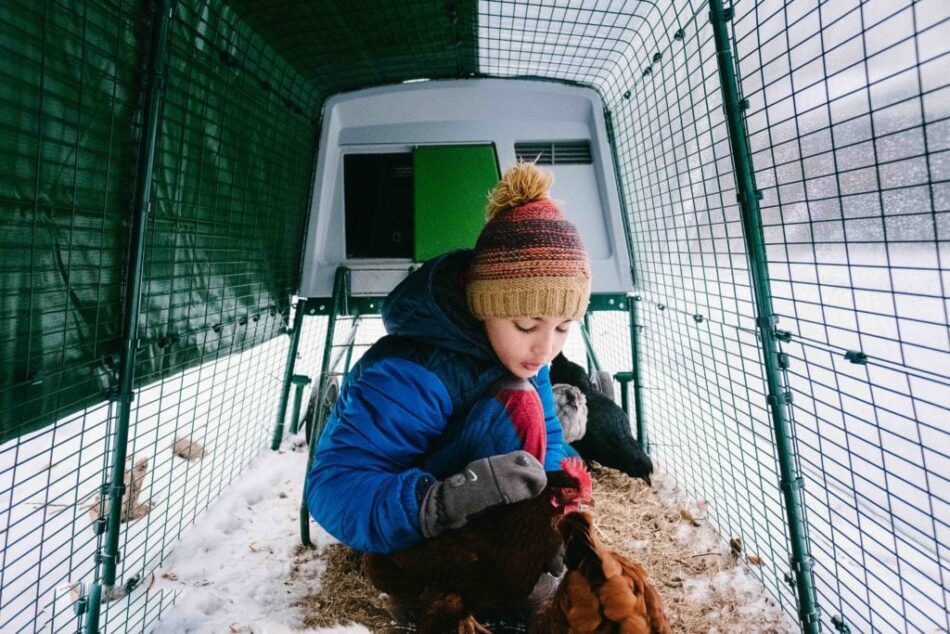
Insulating your chicken coop and getting your flock ready for winter is vital for their health and happiness. Most chicken breeds cope well in moderately cold temperatures as long as they have a well-insulated, dry coop. Chickens normally acclimatize to the cold weather, so if you have an insulated coop such as an Eglu Chicken Coop, you won’t need to fret during the cold months. In fact, chickens are able to adapt to the cold much better than hot weather! But with a little extra planning and preparation, you can ensure that your flock not only endures the winter, but thrives in it.
Why you should use an insulated chicken coop
Whilst chickens tolerate the cold well, ensuring your chicken coop is insulated during the cold months can promote their health. Whether you live in a state such as Alaska that is cold all year round, or experience warm summers followed by cold winters it’s vital you choose a coop suitable for the weather.
Our range of Eglus are designed with warmth as a core aspect. With a unique double-wall insulation system, you’ll find that our coops work in a similar way to double glazing. Your hens’ body heat is trapped inside whilst ensuring cold air cannot get into the sides of the coop. When comparing Eglus to a traditional wooden coop, you’ll discover that the Eglu provides far more insulation.
The insulation of our chicken coops is not the only benefit they provide. They are easy to assemble, easy to clean, portable and simple to attach to chicken runs. This will allow you to give your flock the space they need to roam during the day, as well as a cozy spot to sleep at night.
How to easily insulate your chicken coop
Whilst our chicken coops are naturally insulated, in really cold temperatures you may wish to insulate their home even more. Our Eglu Extreme Weather Protection are designed to perfectly fit your coop for added insulation. The temperature blankets are filled with a heat trapping recycled material that is breathable whilst keeping your pets warm. They are simple to fit to your Eglu and are easily secured with bunjees.
However, if you do not have an Eglu there are other ways to insulate your coop:
Weather protection & insulation for wooden coops
Your chickens’ coop must be waterproof! Most chicken breeds do well in the cold so long as they are dry. Chicken coops should also be insulated enough to remain warm inside even in the cold of winter. Here are our tips for insulating a chicken coop:
- Keep your coop and run dry – you can use coop covers and tarps to do this.
- Spray foam insulation – you can hire someone to insulate your chicken coop with spray foam to help trap heat inside your hens’ nest.
- Fiberglass insulation – using fiberglass insulation is an easy way to add DIY warmth.
- Wool blankets – adding wool blankets to the smalls can help to keep the coop insulated.
Ventilation whilst keeping cozy
A well-ventilated chicken coop will ensure that plenty of fresh air gets inside the coop. This will keep the odors down and avoid moisture build-up. Whilst you want to stop chilly drafts, a chicken coop without ventilation will retain moisture along with heat. And while some air circulation is good, make sure the coop is draft-free.
Elevation to reduce dampness
Height can also be an issue when making sure chicken coops are insulated. Coops should be raised off the ground to prevent the base becoming damp. For larger flocks, the Eglu Cube is an excellent choice for both insulation and elevation. If your coop doesn’t have legs, you can place bricks under the coop to allow air to circulate and reduce dampness. Always make sure you place or build your chicken coop and run-on high ground that won’t flood during heavy rainfall.
Size of the coop
It seems counterintuitive, but chicken coops can actually be too big. When the coop is too big for the size of the flock you have, your chickens won’t create enough body heat to warm up the space. This is why it’s so important to understand how much space your chickens need, when deciding which coop to buy. Chickens huddle together and keep each other warm, so they don’t need much space in their sleeping quarters. Try not to open the door of the coop at night when your chickens are roosting as it can compromise your insulation. Be mindful that this pent-up body heat is keeping them warm, so make coop and egg checks quick! If you have a large coop or barn and just a few chickens, you can place a large cardboard box on its side, half filled with chopped straw or wood shavings in a corner to help them conserve their body heat.
Keeping your chicken run insulated
It’s important that at least part of your chicken run is covered during winter months. Using weatherproof chicken run covers will help reduce how much snow can build up inside the run. You can also build a greenhouse-style addition to your coop, covering it with clear plastic, which will help convert sunlight into warmth. To prevent areas under the run from becoming too muddy, cover wet spots with pelleted pine bedding (usually used for horse stalls). Mud is a breeding ground for poultry parasites, so muddy areas should always be addressed.
Perches for cold chickens
Give your chickens plenty of places to roost. To prevent their feet from getting too cold on the frozen ground, you’ll need to give your chickens a place to perch in both their coop and run. The perches need to be wide enough so that the chickens can cover their toes with their feathers to thaw out chilled toes. By placing freestanding chicken perches or wire-mounted chicken perches, you’ll give multiple hens the opportunity to warm their feet while they’re out of the coop.
Cleaning your coop in winter
Keep your chicken coop clean and dry. Clean the droppings from inside the coop daily and replace bedding as necessary. By keeping the coop both dry and clean, you will help to prevent moisture buildup, which can lead to frostbite on your chickens combs and wattles.
Caring for your hens in cold weather
Keeping your chickens fit and healthy in winter goes beyond just insulating your coop. Here are our top tips for happy winter chickens:
Water in winter
It is important your flock always has a source of fresh, unfrozen water. Depending on where you live, this can pose a challenge. To prevent frequent defrosting, you can invest in a heated waterer or heated poultry drinking base. You can also insulate the water like you have your coop, by wrapping the chicken drinkers up in a layer of bubble wrap to keep the water thawed for longer. Don’t place the water inside the coop, as it will increase humidity levels.
Chicken feed in the cold
During winter your chickens feed consumption will be higher than in the spring/summer. Often chickens enjoy warm feed, like cooked lentils or warm oatmeal with some raisins or other small, dried fruits. Give your hens extra corn or scratch inside of a peck toy for both physical and mental stimulation in the afternoon, as this will heat them up internally as they digest it overnight. Offer hay or dried grasses for extra ruffage to fuel their metabolisms. Hens will decrease or even stop laying eggs in the winter to conserve energy. But you can help encourage hens to continue laying by providing adequate feed – both in quality and quantity. Supply layer pellets to give the right nutrients your egg-producers need throughout the winter.
Take care of their combs and wattles
If it gets extremely cold during the winter, your chickens’ combs and wattles can be in danger of getting frostbite. Most hardy breeds have small combs, but if you have chicken breeds with very large, floppy combs you will need to gently rub Vaseline on their combs and wattles. You will also need to keep an eye out for coughing, sneezing, and general symptoms of being unwell.
Vermin
Remember at this time of year, there are hungry rats and mice attracted to the chickens feed and water. Take extra care with the storage of your feeds. Store feed away from the coop and keep it in an airtight container. If you notice any signs of vermin, remove the feeders and drinkers at night, when they are most active. Offer kitchen scraps or fresh vegetables in a Caddi Treat Holder to keep the floor of your flock’s run free of tempting treats for unwanted visitors.
Fighting winter boredom
With less grass and weeds to munch and fewer bugs to feast on, your chickens will experience boredom in the winter. This can lead to behavioral issues, like feather pecking, egg-eating etc. Prevent boredom by giving your chickens toys like Chicken Swings, perches, piles of leaves, mirrors, or even a xylophone mounted to the run! Keeping your chickens hentertained will ensure they’re mentally stimulated and kept busy.

Introducing Omlet Petcare
Whether you’re a keen chicken keeper, or have a whole pack of pets, we’re here to help you take care of them. From chicken pens to roam in, to comfy dog beds your pooch will adore.
This entry was posted in Chickens on November 1st, 2018 by sammorley




 Introducing a new kitten to an existing adult cat might be easier as the older cat might not feel as threatened due to the fact that the kitten isn’t sexually mature. However it is worth noting that a kitten will be very lively and playful which for a resident older cat might be quite stressful so it’s important you give your existing cat some down time in a separate room to chill out.
Introducing a new kitten to an existing adult cat might be easier as the older cat might not feel as threatened due to the fact that the kitten isn’t sexually mature. However it is worth noting that a kitten will be very lively and playful which for a resident older cat might be quite stressful so it’s important you give your existing cat some down time in a separate room to chill out.
 Hissing and moaning isn’t unusual but it just lets you know where they are at, perhaps slow the process down and keep them separate for a few more days and then try again.
Hissing and moaning isn’t unusual but it just lets you know where they are at, perhaps slow the process down and keep them separate for a few more days and then try again.




